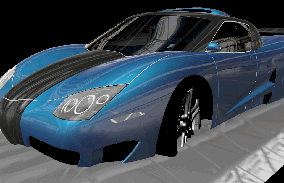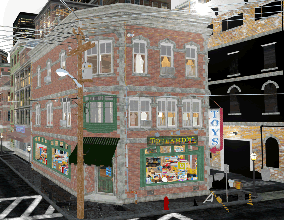LOS ANGELES, August 13, 2008 – SPEC’s
Graphics and Workstation Performance Group (SPEC/GWPG)
announced a wide range of upcoming benchmarks at the
SIGGRAPH 2008 conference in Los Angeles.
The new offerings will include a power-performance benchmark
for workstations, a new version of SPECviewperf, and
new and updated application benchmarks. All are slated
for release before spring of next year.
“Under our expanded charter announced last year,
we are branching out in new directions such as power
consumption, while continuing to move ahead with our
graphics and workstation application benchmarks,” says
George Chaltas, SPEC/GWPG chair. “The overriding
objective is to apply SPEC’s expertise and proven
methodologies in areas that provide the most value to
users, vendors and testing labs worldwide.”
Workstation power consumption
Since the beginning of the year, a SPEC/GWPG subcommittee
has been working on an industry-standard benchmark that
measures power consumption in relation to performance
for professional workstations. An initial benchmark is
being submitted to the Environmental Protection Agency
(EPA) for possible use in its V5.0 requirements for workstation
ENERGY STAR qualification. A public release of a SPEC/GWPG
power benchmark will follow.
The SPEC/GWPG power benchmark will incorporate workloads
from the popular SPECviewperf benchmark for 3D graphics,
as well as CPU workloads in areas such as rendering,
computational fluid dynamics, scientific computing, and
video encoding. Workloads will have the common attributes
of scalability, open source, and portability across all
major workstation platforms.
New in SPECviewperf 10.1
Version 10.1 of SPECviewperf, developed by SPEC’s
graphics performance characterization (SPECgpc) working
group, is expected before the end of the year. It will
feature new functionality and a major update of viewsets,
the testing data sets that are based on traces of graphical
content in real applications.
On the functionality side, SPECviewperf 10.1 will have
the ability to measure performance for applications incorporating
vertex buffer objects (VBOs) and the latest OpenGL (GL2)
shaders.
Updates are being made to more than half of the viewsets,
including those based on traces of 3ds Max, Catia, EnSight,
Maya and Siemens PLM NX. Changes range from new traces
that add GL2 and VBO functionality to test files, to
completely new models that provide a greater challenge
to the latest graphics systems.
New application benchmarks
SPEC/GWPG’s Application Performance Characterization
(SPECapc) project group has a wide range of new and updated
benchmarks planned for fall and winter release. The list
includes performance evaluation software for workstations
running Siemens PLM NX5, 3ds Max 2009, Maya 2009, and
Lightwave 3D.
SPECapc also provides benchmarks for Pro/ENGINEER, Solid
Edge and SolidWorks.
 |
 |
New
traces of the Catia viewset in
the upcoming SPECviewperf 10.1
will take advantage of support
for GL2 shaders and vertex buffer
objects (VBOs). |
The
new toy shop model for the Maya
viewset in the upcoming SPECviewperf
10.1 includes a massive
number of textures. |
About SPEC/GWPG
SPEC/GWPG is an umbrella organization for approved project
groups that develop standardized methods of measuring
graphics and workstation performance for different hardware
platforms. It is a committee of the Standard Performance
Evaluation Corp. (SPEC), a non-profit corporation formed
to establish, maintain and endorse a standardized set
of relevant benchmarks that can be applied to the newest
generation of computers.
SPEC/GWPG members include AMD, Apple, Dell, Fujitsu-Siemens,
Hewlett-Packard, Intel, NVIDIA and Sun. For more information,
visit: www.spec.org/gwpg.
###
Images available upon request.
Media contact: Bob Cramblitt
Cramblitt & Company
919-481-4599; info@cramco.com
SPEC, SPECapc and SPECgpc are trademarks or service
marks of the Standard Performance Evaluation Corporation.
All other trademarks, registered trademarks or service
marks belong to their respective holders.
|






